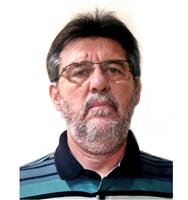Brazil leads World aero, nautical, locomotive clean bio-oils
Brazil already leads the world with new aerial biofuel (for SAF, which cleans up to 70% of kerosene) more for nautical new biofuel (BE8 which cleans up to 80% of bunker dirty oil and costs 50% of HVO) more for locomotive new biofuel (HVO)
1. SUMMARY
This very short article (4 pages) presents the importance and examples of Brazil in the growing—fundamental and urgent—socio-environmental and economic/developmental sustainability worldwide, especially for the poorest rural families, all for the great global environmental cleanup and for the fundamental and real, sustainable global development.
The great global truth, already well accepted, is that Brazil, after setting a great example of sustainability/global cleanup initially with the production of sugarcane and corn ethanol (since 1975 with the Proalcohol Program) and later with biodiesel program too from soybeans and animal fats (since 1977), is now also fully engaged in the research, development, and production—jointly with other countries and companies and/or independently—of new, revolutionary cleans and really sustainable biofuels. Everything, again, occurs as a new Brazilian/worldwide model for SAF (“Sustainable Aeronautic Fuel”), an aerial bio-oil already in high demand and to clean up to 70% of the emissions from the very polluting aviation kerosene (and in which such SAF can even be used pure, that is, at 100%) PLUS the new nautical bio-oils BE8 (“Bevant Maritime Biodiesel”) PLUS HVO (“Hydrotreated Vegetable Oil”), these to depollute up to 80% of the pollution from the high use of highly polluting nautical “bunker” oil. Please also read in PORTUGUESE: Be8 BeVant: The Brazilian biofuel that wants to lead the global energy transition at: https://mundologistica.com.br/noticias/be8-bevant-combustivel-brasileiro-100-renovavel MORE in ENGLISH: “Be8 will start producing a new biofuel to accelerate decarbonization” (With a competitive cost, Be8 BeVant reduces carbon monoxide emissions by up to 50%, becoming a solution for companies seeking to meet short-term sustainability goals) in https://valorinternational.globo.com/branded-content/be8-energy/news/2024/10/24/be8-will-start-producing-a-new-biofuel-to-accelerate-decarbonization.ghtml
Better yet, recently, even our giant VALE Mining Company announced that, together with the North American manufacturer WABTEC, it will be producing in its factory in Brazil a new super large railway locomotive with 02 tanks and capable of being powered by a mixture of up to 50% bio-oil plus up to 50% common diesel S10, this already with 10% biodiesel, remembering that a single convoy with 04 locomotives plus up to 150 full wagons already replaces 280 to 300 large, well-loaded road trailers. VERY GOOD.
Also, these my article presents the fantastic possible recoveries of already very degraded pastures in the Brazil (already with 111 to 160 million hectares degraded) plus the immense areas of our - almost abandoned and growing - semi-arid region (already with about 134 million hectares) and with everything for many plantations of our revolutionary Macauba palm/coconut tree (very well adapted, as it is native to our Cerrados (savannas), and which produces up to 7 times more oil per hectare/year than soybeans and this in a perennial way for 20 to 50 years continuous) - either in isolation and/or much better if already well intercropped with pastures for small animals and/or some legumes and shrubs, also miraculous, for the intensive production of such high demanded/very good prices bio-oils above, especially from aerial SAF plus nautical BE8 and general HVO, plus with leftovers of its good flours with 15% to 25% of PB Crude Protein (as in soybean meal) for use in local productions of Feed for small animals, as our EMBRAPA Brazil agr. Research. Our Brazilian Macauba coconut oil tree is very similar to the date palm tree (coconut date) and as miraculous as it, although much more resistant and much more productive of essential oil.
Now, quite unlike many previous attempts, everything will be financially well-led by the safe, highly profitable, and sustainable production of the Macauba oil in plantations to restore already degraded pastures and caatingas, and even in areas with low rainfall, acidity, and low fertility, which need to be corrected.
2. ARTICLE -
Today, in terms of the origins of almost all socio-environmental and economic problems—fully supporting yet bearing witness to our subsequent major socio-environmental mistakes—there is a very select group of very ambitious individuals and families in the world (numbering only 22.8 million people, the so-called HNWI "High-Net Worth Individuals"—equal to 0.025% of the world's population of 7.9 billion—but their companies or subsidiaries already control—much of it for the "bad" (few resources go to the real, charities, and the like)—almost all the world's assets and finances. Together, these 0.025% of named the richest HNWI held assets worth Us $ 86.8 trillion in 2022, that is, three times greater than the US GDP in the same year (Us $ 27.4 trillion), more than all global companies of any size and location (Banks; Stock Exchanges; some Highly devastating mining companies silent; Large oil/fuel and/or processing industries - some highly devastating as well -, especially from Asia, the Middle East/all the Americas/Northern Europe - plus Multis, Trading’s, Transporters, Brokers, Investors of all sizes, Packaging, etc.
Thus, by other side, many people already agree that it is urgent many very expensive actions against all companies above for the world to reduce GHG emissions – Greenhouse Gases, especially Co2, from the burning/use of petroleum-derived fuels, especially in aviation and nautical applications. Although most also estimate that the oil industry will still be combatable and even necessary for at least another 150 years, even if only to power and even enable other segments/heating/industrialization, etc., that is, even if it is no longer used to power vehicles on all roads and seas.
In fact, lately, in order to comply with previous climate and non-emissions agreements between countries and before UN bodies - especially due to high pressure from consumers and/or users (who suddenly began to see, to prove and, above all, to feel in their skin - clearly and much more - the already gigantic and many reported and now undeniable effects of global climate change, especially in the last 5 years). So, all those serious global companies now are desperate to find new biofuels and/or new, much more efficient machines and/or new technologies that reduce/control their high levels of GHG emissions in up to 5 years, and for this they already support and fund much more research and are much more interested, and all of this, now, in a great hurry.
Brazil started all this about 30 years ago with the Proálcohol/ethanol program from sugarcane and corn after Brazil 1975 and then with biodiesel from soybeans and animal fats after Brazil 1977. It is far ahead of the curve in terms of real global environmental minimum cleanliness and, better, if high sustainability, even serving as an example and even as a major research, development, and intense testing ground for new proposed global biofuels, as well as ambitious new machines and technologies – even if still in the works, as long as they are genuine, no longer forgiving some highly suspicious and/or once again merely delaying/delaying and/or already clearly deceitful proposals and actions without truly positive benefits/costs.
For the new world - and its billions of already highly socially and environmentally aware consumers (especially the new Generation Z and others) - it's no longer enough to simply try and/or propose reducing emissions and pollution, creating new, even greater, physical/environmental problems, such as water diversion and contamination - even via recycling, since quality water is finite, rare, and expensive (as, unfortunately, is still widely proposed in technologies for green H2, biomethane, etc.) - and of soil, subsoil, air, and the hundreds of biomes and biotas worldwide. Pitiful are the companies whose names are linked to such erroneous and/or deceitful initiatives, as is already being demonstrated against mining companies and the many expensive landfills that spill/infiltrate waste, and municipalities with their deceptions/fakes of incineration, burning, or partial pyrolysis of urban waste to generate criminous energy, etc., and which today already pay huge fees and fines for their devastating errors.
Thus, in the case of the future importance and survival of the oil industry—even if it will be far less important for future sustainable mobility—not even powerful nuclear energy (much more efficient and cheaper, but just as environmentally problematic as oil) plus the combination of hydroelectric, solar, wind, waves, deep river currents (minimum 1.5 meters), vortices swirling water falling up to 3 meters deep and other energy sources—will be able, alone, to displace certain importance of oil, gas, and similar sources in the coming decades.
Therefore, in practice, we must convince these oil, petrochemical, fine chemical, plastics, agribusiness, mining, and other high-GHG-emitting companies to join us sustainably (funding and adding up to 80% of some old and new clean fuels, as follows, in much lower-emitting blends with their dirty fuels), even to clean up their images and financial statements. These fuels, still dirty, are now becoming hybrids with clean sources such as ethanol, biodiesel and, more recently, with our Macaúba oil, both for hybrid aerial SAF and for nautical BE8, plus the new HVO diesel for new locomotives; all these technologies in which Brazil is already the world champion researcher, producer and supplier.
In 2022, global carbon dioxide (Co2) emissions from human activities—the highest today than at any other time in history—were already 182 times higher than in 1850.
Therefore, even though the transportation sector is not the largest Co2 emitter in the world, for a number of reasons (including pressure from its consumers and stakeholders) and even to serve as an example of future threats and opportunities for other, much larger, emitting sectors, the need for much greater production and use of cleaner and more renewable (even sustainable, when 100% replaced by SAF) aviation kerosene, as well as BE8 and HVO, the clean, renewable, and even sustainable biodiesel for marine use, is gaining momentum and strength.
In 2019, the BBC Mundo study—using data from the US Climate Accountability Institute—described how a group of 20 companies (all in the oil or coal sector) were already responsible for one-third (33.0%) of all Co2 emissions worldwide, and our PETROBRAS was also on the list. See their names at: https://www.bbc.com/portuguese/geral-49992174. According to another analysis, initially published by the British newspaper The Guardian, the world's 20 largest oil, natural gas, and coal producers were responsible for 480.16 billion tons of carbon dioxide (Co2) and methane (Nh4) emitted into the atmosphere. This amount represented 35.0% of total emissions from fossil fuels and cement, which totaled 1.35 trillion tons/year. Methane was the worst, as it is about 80 times more potent/much more polluting than carbon dioxide (Co2), and this over a period of up to 20 years.
In 2022, of the total global emissions of these harmful, and still growing, GHGs (Greenhouse Gases), 80.6% were carbon dioxide (Co2) PLUS 12.1% methane (Ch4) – which is much more harmful to the environment than Co2 – PLUS 5.3% nitrous oxide (N2o), the infamous laughing gas, PLUS 2.0% fluorinated gases.
Below I also present some very important technical-economic and socio-environmental observations, especially regarding about the evolution of our rural socio-environmental degradations PLUS their possible causes and still erroneous ways of trying to reduce/innovate/resurrect/less emit, especially in the forms of reforestation, only renewable and little, or not at all, sustainable, although already replaceable, possibly with much greater and better real socio-environmental economic results as in the new sustainable cultivations and processing of our Macauba new oil, of our EMBRAPA. Initially, this Macauba new oil goes to produce SAF aerial clean oil more BE8 + HVO nautical cleans oils, all already by global giants, who really want to sustain/socialize themselves quickly so as not to lose markets or customers (and much larger in the sum than the combined global cellulose sector) MUBADALA/ACELEN plus BASF, INOCAS, PETROBRAS, VIBRA, KLM, BOEING, Honeywell, EFEN/BP Marine, Porto de Açu/MUBADALA, Wilson and Sons, large Chinese investors.
Another recent mention of high technical praise and national pride is that our Vale and the North American locomotive manufacturer WABTEC, which already has a factory in Brazil, recently developed a new large-scale generator capable of running on 50% BE8 biooil from Macauba or on HVO biodiesel and/or 50% corn or sugarcane ethanol, as desired, plus 50% crude diesel. Imagine the massive environmental cleanup if this trend catches on, already serving as a new socio-environmental and economic example for Brazil (especially considering that a convoy of 150 full railcars plus four locomotives replace 280 to 300 fully loaded road trailers).
Furthermore, these oil derivatives from our Macauba coconut long life plant have low production costs and 100% domestic manufacturing/refining technology, all without polluting. As is known, the Macauba produces up to seven times more crude oil per hectare/year than soybean oil, PLUS with a large surplus of high-protein residues from processing/refining (as our EMBRAPA Research Federal Company), and all this in a perennial form for 20 to 50 years. Macauba is a plant native to our named Cerrados giant zone (savannas) and has also fully adapted to our giant caatingas/pasture areas too, even if highly degraded, all according to cultivation and recent results from EMBRAPA at its special experimental station and large seedling multiplier/producer, located in Monte Claros City, Minas Gerais State, in partnership with the Arabs from the ACELEN/Mubadala biorefinery in Camaçari City, Bahia.
In Brazil, on the other hand, most land results/metropolitan transportations in old times are still carried out using the so-called S-500 diesel (from petrol), which is highly polluting to the atmosphere (especially with the terrible sulfuric gases So2 and So3, from acid rain, to which these are added to nitric gases). BUT, recent, the new rural/metropolitan diesel is added with new semi clean biodiesel, the D-50, already greatly expands its use, although the ideal fuel, as we know, now, also it will be included the new aerial SAF oil above (“Sustainable Aeronautic Fuel”). All to be added to the current aviation kerosene and/or to reach 100.0% pure use in the future and/or the super new BE8 “Bevant Maritime Biodiesel” (50% cheaper than the current HVO “Hydrotreated Vegetable Oil”, this named the green maritime biodiesel), all to depollute up to 80.0% of the old and highly polluting naval “bunker” oil. Now, both be well obtained from the cultivation of super fine – also 100.0% nationalized – comes from the new Macaúba coconut oil more from other oils and even from corn ethanol.
The transportation market's current concern is even greater due to the new regulations in effect only for some places metropolitan diesel. An agreement reached last year Brazil mandates the sale of an even cleaner metropolitan diesel in some areas of the country. This is S-50, initially with located uses, because it contains only 50 parts per million of sulfur. In the rest of Brazil, the metropolitan diesel sold is the S-500, very high pollute because with 500 parts per million of sulfur. Much worse, inland diesel, like the current maritime bunker, has a much higher pollution level: 2,000 parts per million of sulfur. The regulation mandating the sale of a cleaner diesel will cause a further price shift and further encourage fraud in the regions where S-50 has become mandatory, according to dealer representatives.
On the other hand, and in addition, obviously, the main objectives of this my new proposed diagnosis are not only produce new, truly clean and sustainable global biofuels. Also, additionally, all new Brazilian Macauba coconut trees projects go to restore the lands, waters, biomes, and biotas of the large pasture areas already degraded by agricultural misuse—see below—but also of the giant Brazilian semiarid region, which already covers approximately 134.0 million hectares (equivalent to approximately 1,340,863 km2, most of which are already caatingas and/or highly degraded pastures, also undergoing accelerated desertification). On Brazil, the semiarid region is located in 13 states in the Northeast, plus the North/Northeast of Minas Gerais, but also—always using the same inexpensive, viable, and well-described technologies proposed below.
Furthermore—also urgently needed—are the already enormous 160.0 million hectares of pastures already experiencing some level of degradation and occupying almost 50% of the country's rural pastures properties, according to EMBRAPA assessments. However, for the LAPIG/UFG Researchers, there are 111.0 million hectares with over 40% of our pastures already in degradation, equal to 60% of the total of 177.0 million hectares of pastures of the country, as they have already been destroyed by very ambitious and devastating farmers and traders/multis/coops/processors who have now migrated so much (leaving their traces of abandonment and destruction behind) and which now reach the very north of the country, whether in the region nick named the MATOPIBA but also in the Northern Border of AP, AM, RR and AC, states.
Also, for the respected Institute/NGO MPABiomas (see link below), the total area of ??land used as some form of pasture in the BRAZIL in 2020 was enormous, already reaching 201.0 million hectares. Of these, 154.0 million hectares were effective pastures (much of it cultivated/rotated) plus 47.0 million hectares of natural grasslands, even arid and/or low-fertility and/or heavily mullioned, but often used, sometimes as auxiliary pastures after their rest and after receiving good rains. They believe that pastureland alone has grown 200% in the Amazon over the past 36 years.
In time, however, and although with unreliable and even unfair data in my view, some more eager consultants point out that 74% of Brazil's current greenhouse gas emissions come from numerous and massive fires to clear more land cultures also for false pastures grass implantations and then, clearly, goes to much more grains, cotton, coffee, sugar cane, eucalyptus, fruits, natural foods, pastures; PLUS from the many and subsequent misuses of our rural and forest soils (still with a lot of burning of crop residues, which kills even old seeds and the loss of grains in regrowth for temporary mulching PLUS native/beneficial vegetation = such as some native legumes - and even ideal mulching PLUS which burns essential organic matter) and/or from inadequate replacement of limestone at the right times and even from insufficient essential fertilizers in the correct volumes, nor from proper erosion control works, etc.).
Unfortunately, several of the current potential recovery degraded pastures and dry semiarid consortia most recommended by research to even resurrect (the semi-arid giants and/or immense areas already with very degraded pastures) have not worked well or satisfactorily, even for a short time, in areas in arid and/or infertile and/or damp conditions and/or with little shade and humidity - essential for the biomes and biotas - of our semi-arid/degraded pastures, even if they are only via protein banks, well fenced and well isolated from animals.
In this case, unfortunately, in addition to the repeated failures in the many attempts at implementation/management due to the negative influences of the previous items, the main negative aspect—and the one that greatly complicates everything—is the low generation of net revenue per hectare/year in such added/consorted cultures locations, which greatly hinders any improvements, expansions, and even small restorations. This is contrary to what is perhaps insistently preached by the many erroneous false developmentalist and/or solution-oriented propaganda from certain federal, state, and municipal agencies, and even from companies and certain "bad" NGOs. Let it be very clear that this (low net income per hectare/year) will no longer occur in my new proposal of several consortiums - also quite restorative of soils, waters and biomes/biotas - with our macauba palm for very expensive oils, because the annual net income per hectare only with this miraculous crop and for up to 50 years of macauba for oil, now and in the future, will fully support all these new consortium projects with such a Brazilian coconut oil plant.
So, now, in my brief previous and future diagnoses - based on my extensive experience, honesty, seriousness, and respect in dealing with such matters - I propose and foresee a future socio-environmental revolution happening here -real, positive, and highly profitable - with these new consortia, up to four in number, in the same location, where the flagship will be the native Macauba palm oil for the production of truly sustainable, fourth-generation biofuels for aviation, nautical, and even locomotives. It will be the main crop and a major generator of a fundamental and very positive high net real income per hectare/year.
Additionally, in addition to the four crops more some grass pastures that we have already proposed here in these new forms and with new technologies and other/new markets with very secure demands - including international ones - and with expected strong expansions, the Macauba has also been heavily intercropped in new SAF Agroforestry System and/or also new MSF Sustainable Forest Management and/or new ILPFE Crop-Livestock-Forest-Extractivism Integration systems too with good, suitable pastures, truly nutritious and very resistant as described/exemplified and, mainly, with other crops also with possible additional generation of medium or high net income per hectare/year, such as providing shade for coffee and cocoa (replacing the traditional banana trees and/or native trees) and with fruit trees such as the açaí palm plus the chestnuts, mushrooms and others and even for honey production. See in English “Agroforestry systems: sustainable agriculture” at: https://www.researchgate.net/publication/276027704_Sistemas_agroflorestais_a_agropecuaria_sustentavel MORE “Agroforestry Systems (SAFs) – What they are, types, benefits and applications” at: https://123ecos.com.br/docs/sistemas-agroflorestais-saf/ .
In previous situations, the many failures of intensive pasture and semiarid recovery attempts in Brazil, as reported above, were due much more to the fact that most food plants for animals and even humans, with good protein levels and production of good volumes of green, and even dry, biomass, were unable to remain productive for many years and/or because they required special cultivation and/or processing/storage methods (silage, haymaking, localized irrigation, green manure, etc.), that is, with very expensive systems and which small, very poor farmers with few crops - mostly family-based - have never been able, or have been able, to adopt for long.
Thus, certain intercropping methods - much touted - even though they are highly resistant to droughts and very weak soils - such as those with andropogon, buffel, or capiaçu grasses, etc. - have not yielded results. intercropped with shrubs/legumes that are food crops for animals and even humans (most of which are very resistant to droughts, but not very resistant to fires and natural fires, which are common in such biomes). The same applies, directly and without intercropping, to shrubs and even leguminous trees, such as leucaenas and/or pigeon pea = andu and/or mesquite high tree and/or broad bean/bajão tree (large pod), inga (sweet inga pod), etc.
Many attempts have also been made to intercrop (consortium) with these resistant grasses/grasses with food crops (grains) that require little rainfall and are even resistant to poor/acidic soils, such as millet, sorghum, corn undemanding varieties, Mucuna beans, macassar beans, etc., but all of these have yielded few real positive/improving/restorative results, lasting at least three years.
Thus, and now, in my many innovative articles, I intend to demonstrate with data, facts, and photos that the possible agricultural intercropping of Macaúba crops, highly regenerative and economically rich - double, triple, and even quadruple, as proposed in the title above, in the same area and climate and with enormous local/microregional socio-environmental goals (as we will demonstrate) and, above all, serious economic/developmental ones - can recover and once again make viable/resurrect agricultural production in the semiarid region of any location. Better yet, results can begin within six months, if through the wise choice of Macaúba intercropping, for example, with the new EMBRAPA legume Gliricidia or with the Atriplex = "salt plant," an Australian crop, but also improved by EMBRAPA for cultivation in Northeast Brazil. This will all occur either for future production of a large amount of Macauba oil for aeronautical purposes = SAF (Sustainable Aeronautic Fuel) to supplement the current highly polluting aviation kerosene (and/or to reach 100% pure use) and/or for the new BE8 "Bevant Maritime Biodiesel" (50% cheaper than the current HVO Hydrotreated Vegetable Oil, the green maritime biodiesel). See technical and market details about both above, that is, both are already sustainable and already have high global demand guaranteed by high value and for many years.
It is also worthy of local praise that the processing of such Macauba for oil yields a high-protein mass (press cake) for animal feed (like the new DDGs in the production of corn for ethanol).
In the same intercropping Macauba site as proposed above – but with a somewhat short-term vision, since Macauba will only produce from the 6th year onwards of Macauba (10 m spacing x 10 m), also for shading and with low consumption of soil and subsoil water also can be cultivated in the intervals/useful spaces, both the well-known forage palm for the intensive production of forage for cattle/goats/sheep, as well as the new cultivation of the recent legume Gliricidia, also high in protein and developed/improved by EMBRAPA, in this case already producing after 6 months of initial cultivation. Everything will occur in the same open and wide area and/or in fenced areas in the form of a protein bank and for the intensive and additional production of meal for small animals such as poultry, goats, cattle, pigs and even fish.
Additionally, in locations with severe difficulties accessing surface water for a long time, EMBRAPA's Technology Package for the Semi-Arid Region recommends, for the same location or neighboring areas and/or, especially as a protein bank, the drilling of semi-artesian (shallow) or even artesian (deep) wells to produce ample water for human and animal use, irrigation, and even semi-freshwater or freshwater for shrimp farming, all to provide adequate food or generate a good income for local and neighboring people.
In this case for shrimp farming, a very good combination of technologies already has been adopted for years in the Northeast that, after collecting and quickly desalinating the saltwater obtained, even abundantly from such wells (using special reverse osmosis machines that only consume electricity and some special membranes and, in general, are donated, installed, and even maintained by governments and public and private entities, especially some good NGOs). Those shrimp farming uses water semi-artesian/artesian salt residues from the slow desalination of such brackish or salty waters, either to supply artificial lakes, where the aforementioned shrimp are also raised, and/or to irrigate crops of the Australian plant/shrub "atriplex" or "salt plant," which produces good plant mass and also has a good protein level, supporting soils and waters with up to medium levels of salt. See more about this at: https://pt.learnaboutworld.com/article/atriplex-halimus-caractersticas--hbitat--usos--enfermedades
Thus, the potential combination of the cultivation of our miraculous MACAUBA palm oil (a future financially rich resource, as a major source of global biofuels, highly sustainable, revolutionary, and with guaranteed huge future demand) with the four technologies/crops more grass pastures mentioned and encouraged above could bring about a true socio-environmental, economic, and developmental revolution in poor, suffering, and already highly degraded areas of the country, today, with no uses or purposes. This could happen in the short to medium term and for many years to come. In the case of our already revolutionary MACAUBA palm oil - if it well implemented and if it doesn't bring a super-contaminating disease from abroad - this will occur in both government projects and serious, socio-environmental, and economically positive business projects, such as those proposed by ACELEN and other private companies, and even by individual or group rural producers and their cooperatives and associations throughout the country, disseminating MACAUBA plantations for oil and bran, regardless of size or location.
In all these projects, however, a super special, gigantic, constant and joint phytosanitary care will be necessary, all so that the seeds, seedlings and crops of MACAUBA are very well protected because, previously and even proven, they have already brought and already contaminated several crops from Brazil, as are facts and/or suspicions in the cases of the “witch’s broom” of cocoa (which entered Brazil since 1989 via Rondônia State, perhaps coming from closer Colombia or Peru) PLUS the suspected coffee rust and since 1970 (via its crops in Bahia and in the same region as cocoa) PLUS the strange and then unknown, “fatal yellowing” since 1985 and the African “fusariosis” in our palm/oil palm for food, almost already decimated in BA and PA states.
END
This detailed legal diagnosis is neither official nor public - personal and without any external influences - but competitive and exclusive. It can only be supplemented by contacting and requesting information via email: [email protected].
Brasília (DF) and Porto Seguro (BA) on October 20, 2025
Thank you for reading, analyzing, and sharing.
"VIVAMELHOR AMBIENTAL A BRAZIL THINK TANK" (a modern and faster socio-environmentalist/green & sustainable energies Brazilian think tank).







